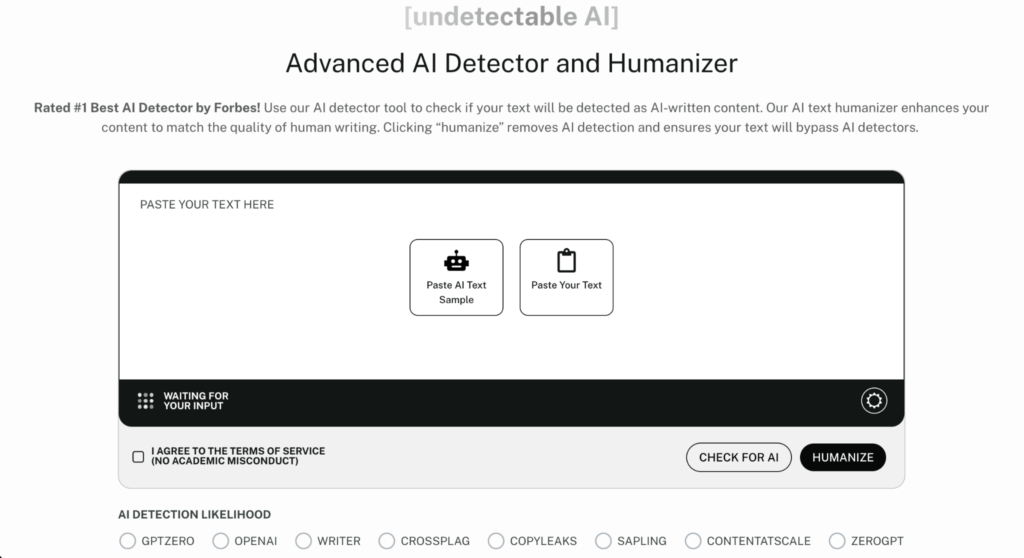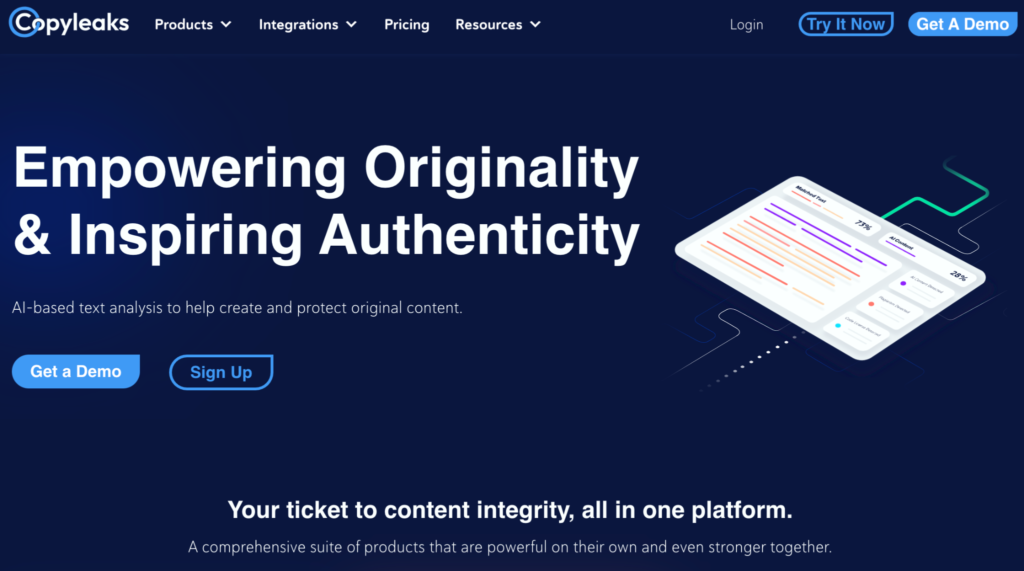In today’s vast digital landscape, the explosion of textual content across endless platforms necessitates sophisticated tools to safeguard the integrity, relevance, and propriety of disseminated information. AI text content detectors have emerged as refined solutions, wielding advanced algorithms to explore large volumes of data, identifying unique patterns, anomalies, or attributes. Integrating the latest in artificial intelligence and machine learning, these tools have transformed content analysis, proving vital for applications ranging from scholarly research to the management of online material.
Essential Technologies in AI-Enabled Text Detection
The essence of AI-enabled text detection is encapsulated in Natural Language Processing (NLP) and Machine Learning (ML), the bedrock of artificial intelligence that grants computers the capability to comprehend, interpret, and produce human language. An in-depth examination of these crucial technologies reveals:
Natural Language Processing (NLP): NLP arms machines with the capacity to parse and make sense of human language via algorithms that dissect and scrutinize the text’s linguistic blueprint. This scrutiny spans syntax (sentence formation), semantics (the significance of words and sentences), and pragmatics (contextual interpretation of meaning). NLP endows AI text detectors with the prowess to tackle the complexities of language, enabling them to interpret the various meanings a word might convey in differing contexts, decode idiomatic expressions, and assess the sentiment or tone conveyed in the text.
Machine Learning (ML): ML involves instructing computers to analyze data, identify patterns, and render decisions with scant human intervention. Within text detection, ML algorithms are honed on diverse text corpuses, furnishing them with the ability to discern distinct features, such as markers of spam emails, evidence of plagiarism, or shades of emotional expression.
Assessment of Premier AI Text Content Detectors in 2024
By the year 2024, the realm of AI text content detection has seen substantial progress, delivering custom solutions designed for domains including academia, digital media, and cybersecurity. The leading detectors in the marketplace are characterized by their unmatched precision, deep understanding of context, and distinctive functionalities. An outline of their key benefits includes:
Advanced Natural Language Understanding (NLU):
- Features: Mastery in interpreting both the overt structure and subtle nuances of language, making these detectors proficient in tasks that demand a refined grasp of context, like detecting sarcasm or performing detailed sentiment analysis.
- Use Cases: Crucial for moderating content on digital platforms, evaluating consumer feedback, and conducting comprehensive literature reviews.
Real-Time Detection and Response:
- Features: With the capability for instantaneous analysis, these tools quickly evaluate text as it appears, enabling swift content moderation and plagiarism verification.
- Use Cases: Essential for real-time communication services, online examination implementations, and the prompt publication of content.
Multilingual and Cross-Cultural Capability:
- Features: Surmounting linguistic boundaries, these detectors support an extensive range of languages, inclusive of those using non-Latin scripts.
- Use Cases: Paramount for global content moderation, upholding academic integrity in diverse languages, and facilitating cross-cultural market analysis.
AI Detector Tools: Side-By-Side Comparison
- Undetectable.ai

- Ease of Use: User-friendly interface for content input.
- Key Features: Combines AI detection with content humanization, supporting up to 10,000 characters per analysis.
- Accuracy: Estimates suggest 85-95% detection rates.
- Price: Freemium version available; personal plans start at $5/month.
- Best Suited For: Writers, bloggers, and researchers.
- Copyleaks

- Ease of Use: Direct paste or URL for text analysis.
- Key Features: Sentence-level assessment, multilingual support.
- Accuracy: 99.1% accuracy with a 0.2% false positive rate.
- Price: Free option; subscriptions start at $9.99/month.
- Best Suited For: Multinational enterprises, software development teams.
- Ease of Use: Account registration and text upload.
- Key Features: AI detection and plagiarism checking.
- Accuracy: Over 95% accuracy.
- Price: Pay-as-you-go at $10 for 3000 credits.
- Best Suited For: Teams, marketing/SEO agencies.
- Deepnudes.co
- Ease of Use: Text input with color-coded analysis.
- Key Features: Forensic text analysis based on AI predictions.
- Accuracy: Over 72% in Harvard research.
- Price: From $10.
- Best Suited For: Researchers and developers.
- Content at Scale
- Ease of Use: Text or file upload for analysis.
- Key Features: Unlimited AI detection in paid tier.
- Accuracy: Marketed at 98% but tested at 66%.
- Price: Free tier; paid tier at $49/month.
- Best Suited For: Businesses and writers.
- Writer
- Ease of Use: Copy in text or add a URL for analysis.
- Key Features: AI writing assistance, grammar checking.
- Accuracy: Inconsistent issues with 38% accuracy score.
- Price: Free.
- Best Suited For: Writers, website owners.
In conclusion, there’s no one-size-fits-all answer to selecting the perfect AI detector tool. By carefully considering these factors, you can choose a tool that not only enhances your ability to detect AI-generated content but also fits seamlessly into your workflow, contributing to the integrity and quality of your digital content landscape.








